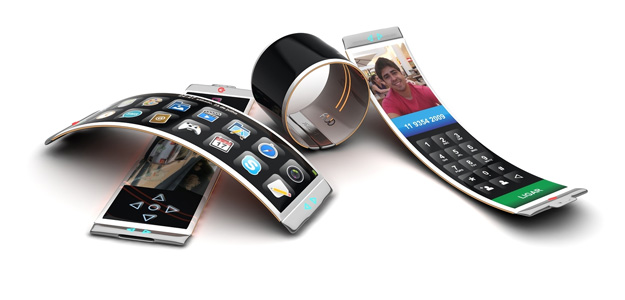 Apple’s iPhone arguably led the pack for the last smartphone generation, but with Samsung taking some of Cupertino’s momentum away in recent months, leadership isn’t so defined this year. In many ways, we’re back to where we were before the iPhone, when Palm, RIM and Microsoft fought for leadership of the market, before Apple and Google stormed in to split it up. I think we are ready for another clear leader. But this will take a company with vision and the willingness to step away from the pack.
Apple’s iPhone arguably led the pack for the last smartphone generation, but with Samsung taking some of Cupertino’s momentum away in recent months, leadership isn’t so defined this year. In many ways, we’re back to where we were before the iPhone, when Palm, RIM and Microsoft fought for leadership of the market, before Apple and Google stormed in to split it up. I think we are ready for another clear leader. But this will take a company with vision and the willingness to step away from the pack.
There are three features I think will define the next-generation phone.
One phone, two personalities, iron-clad walls between
A lot of folks carry two phones today, and they long to return to a time when they had to carry just one. They need a single phone that can contain two numbers and have a completely separate personal and business personalities they can switch between, with one interface, and security to keep each side separate. In other words, your boss shouldn’t be able to pry into what you’re doing on your time, and apps you install on your own shouldn’t be able to violate company security policies.
Whether this means the phone will need two SIMs, or a virtual SIM that has two personalities, is still unclear. But it’s clear the market wants a single phone that can handle two roles, and that phone hasn’t arrived yet.
Cheap international roaming
A huge number of smartphone users travel outside of the country, but they either have to suffer through massive roaming charges, or bring a separate phone with a native SIM to make inexpensive calls from inside the country. Roaming on the phone can cost upwards of $9 a minute, with a megabyte of data costing even more. Rates like that can make talking or downloading one of the biggest expenses of a vacation or business trip.
The next-generation phone will have the ability to dynamically load the equivalent of a local SIM and incur charges at local rates, either billed or prepaid, to keep the costs down and make traveling with one phone and all of your features affordable.
Virtual PBX
A PBX, or Private Branch Exchange, is what companies have used for years to connect employees, but they are mostly on their last legs or completely obsolete. Companies are paying for multiple lines and multiple numbers, and often have to use “follow me” services to first ring the employee office phone and then route it to their cell phone, even though a call to the cell phone would be more certain because the employee carries it.
Being able to link a smartphone with full forwarding and response capability to a virtual or physical VoIP PBX is not only possible, it is a feature in shipping VoIP PBXs… but it isn’t yet elegantly integrated into the
Hardware advancements
Along with everything above, the next-generation smartphone will sport some hardware advancements we’ve seen before that never quite went mainstream. For instance, wireless charging is a given, since the biggest complaint with current-generation phones is lousy battery life. Better security would be number two, since passwords are inadequate and the information on a phone can be used to gain access to secure company resources and steal information. More balanced cameras with anti-shake technology and better lenses should also eliminate the difference between that point-and-shoot camera you are always leaving at home and your
That’s my list of next generation smartphone features. What’s yours? Who do you think might be first to market with a phone that could revolutionize today’s market, like the iPhone did last generation?
Guest contributor Rob Enderle is the founder and principal analyst for the Enderle Group, and one of the most frequently quoted tech pundits in the world. Opinion pieces denote the opinions of the author, and do not necessarily represent the views of Digital Trends.
Editors' Recommendations
- Motorola’s next folding phone just leaked. Here’s what it looks like
- I really hope the Google Pixel Fold 2 doesn’t look like this
- Look who just replaced Samsung as king of the global smartphone market
- 7 smartphones coming out in 2024 I can’t wait for
- I really hope the iPhone 16 doesn’t look like this


